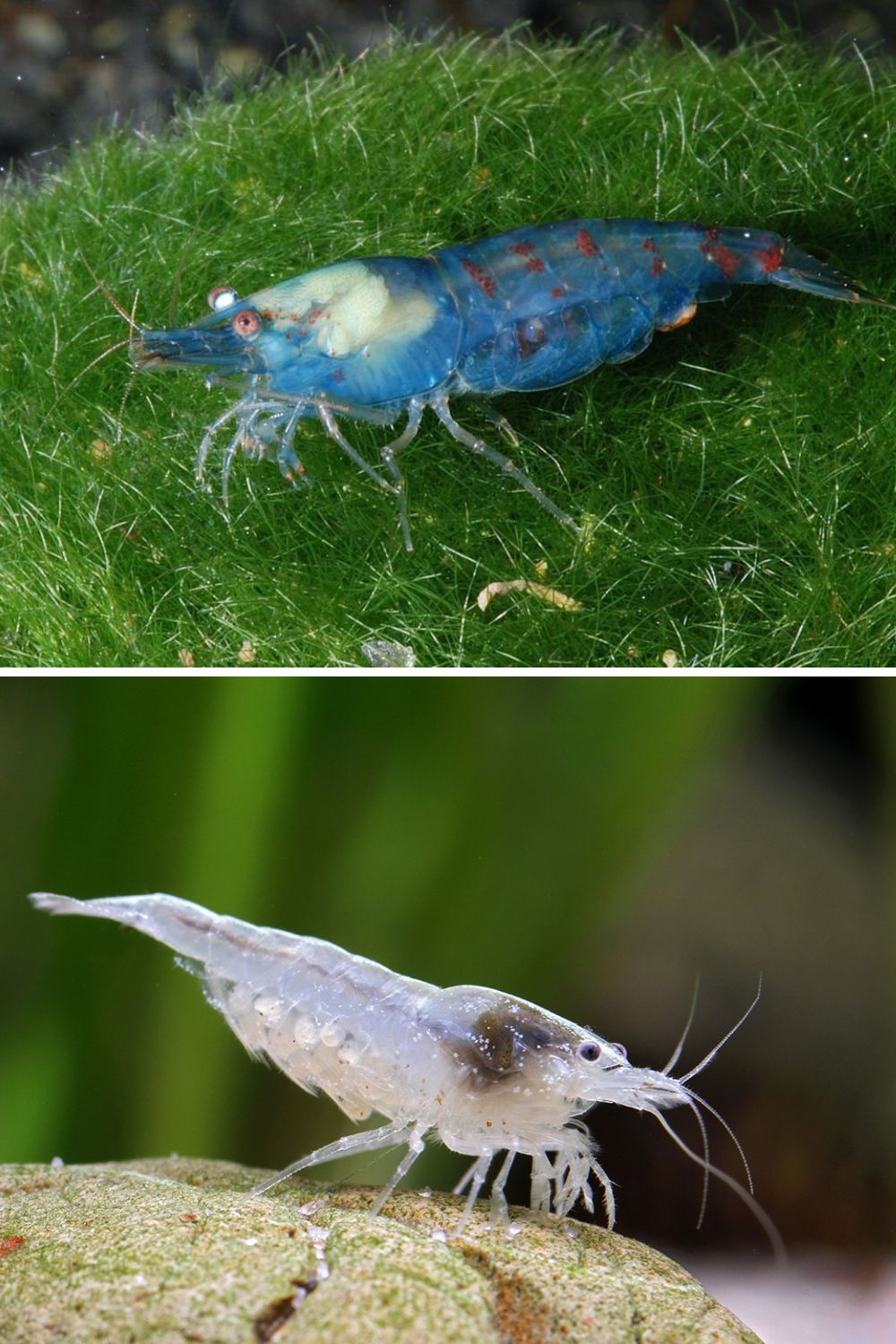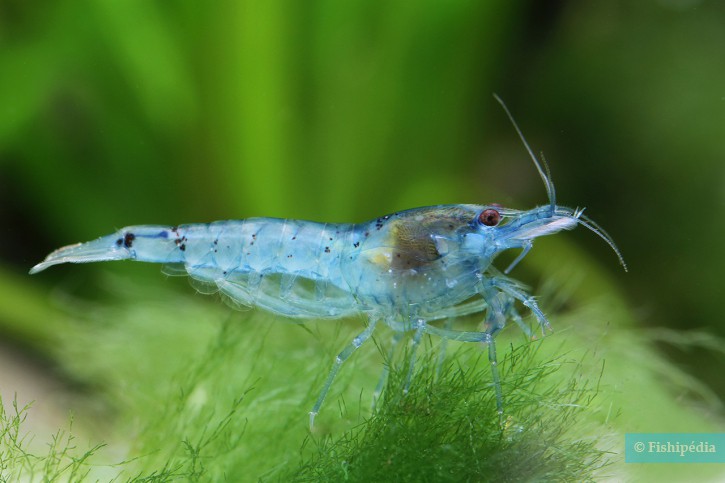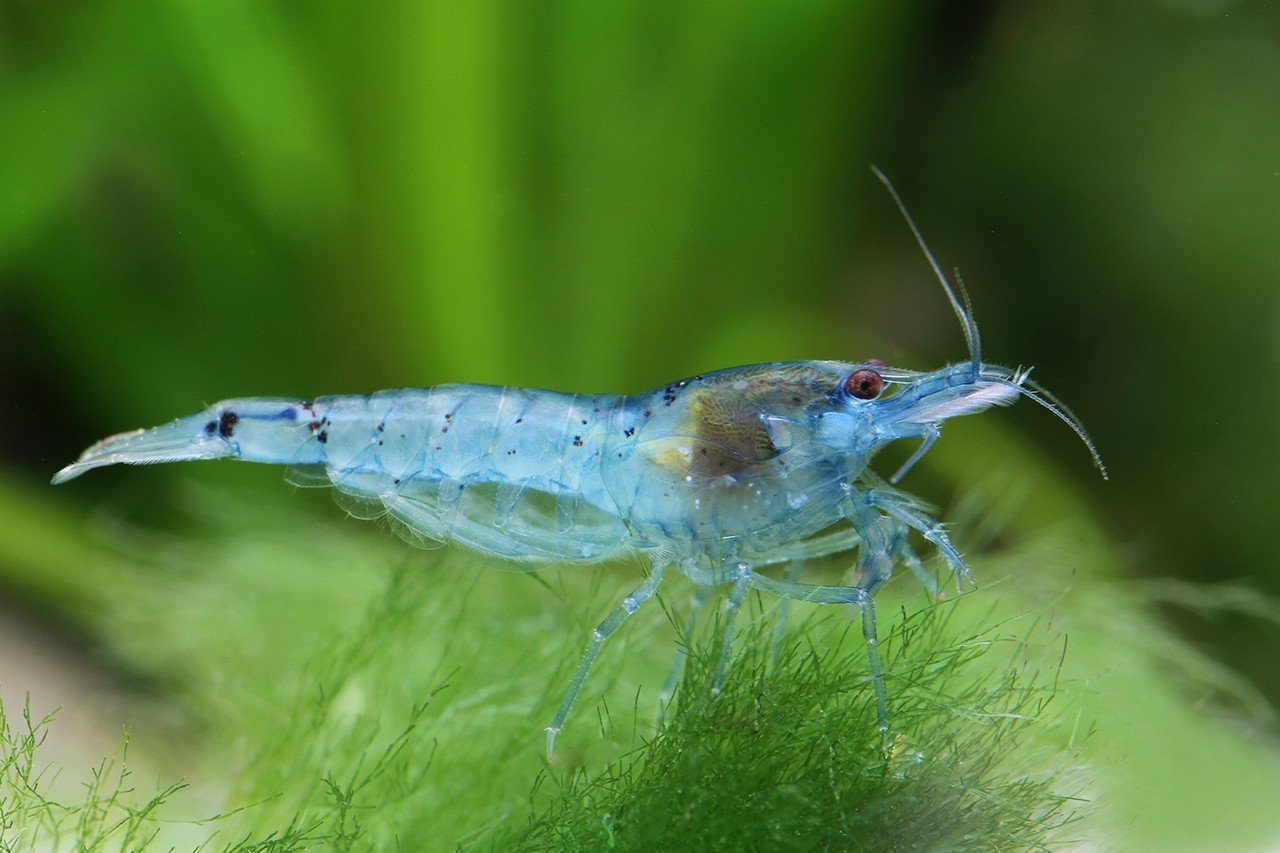Blue Pearl Tiger Shrimp can suffer from bacterial infections and poor water quality. These health issues can lead to stress and death.
Blue Pearl Tiger Shrimp are popular in aquariums for their stunning blue coloration and unique patterns. These shrimp, like any other aquatic creatures, require specific care to thrive. Maintaining optimal water quality is crucial to prevent health problems. Bacterial infections are common and can quickly become fatal if not addressed promptly.
Regular water changes and proper tank maintenance can help mitigate these risks. Additionally, providing a balanced diet and avoiding overcrowding in the tank can enhance their overall well-being. Understanding and addressing these health concerns ensures your shrimp live a healthy and vibrant life.

Credit: www.theshrimpfarm.com
Common Health Issues
Blue Pearl Tiger Shrimp are delicate creatures. They often face health issues. Understanding these problems helps in keeping them healthy. Below are some common health issues:
Bacterial Infections
Bacterial infections are a major concern for Blue Pearl Tiger Shrimp. Bacteria can enter through wounds or contaminated water. Symptoms include:
- Red or inflamed spots on the body
- Lethargic behavior
- Loss of appetite
To prevent bacterial infections, keep the tank clean. Regular water changes and proper filtration are crucial. Isolate infected shrimp to prevent spreading.
Fungal Infections
Fungal infections are another health issue. These infections often appear as white or fuzzy patches on the shrimp. Common symptoms include:
- White cotton-like growth on the body or legs
- Discoloration of the shell
- Difficulty in swimming
To treat fungal infections, use antifungal medications. Quarantine affected shrimp to avoid contamination.
Parasitic Infestations
Parasites are tiny organisms that harm the shrimp. They can attach to the gills, body, or intestines. Symptoms of parasitic infestations include:
- Visible parasites on the body
- Scratching against surfaces
- Weight loss
To prevent parasites, maintain good water quality. Quarantine new shrimp before adding them to the tank.
Symptoms To Watch For
Blue Pearl Tiger Shrimp are beautiful and delicate creatures. Keeping them healthy is important for any shrimp enthusiast. Recognizing early symptoms of health problems can save their lives. Here are some key symptoms to watch for:
Discoloration
Healthy Blue Pearl Tiger Shrimp have a vibrant blue hue. Discoloration can signal health problems. Watch for any changes in their color. Shrimp may turn pale or develop dark spots. This can indicate stress or disease.
Lethargy
Shrimp are usually active and constantly moving. Lethargy is a sign they are unwell. If your shrimp are inactive or resting too much, they might be sick. Lethargic shrimp may also hide more often.
Loss Of Appetite
Shrimp love to eat and are always searching for food. A loss of appetite is a clear sign of trouble. If your shrimp stop eating or eat less, they could be sick. Monitor their eating habits closely.
Causes Of Health Problems
Understanding the causes of health problems in Blue Pearl Tiger Shrimp is important. Healthy shrimp lead to a thriving aquarium. Let’s explore the main factors that can affect their well-being.
Poor Water Quality
Poor water quality is a major cause of health issues in Blue Pearl Tiger Shrimp. These shrimp need clean water to stay healthy. Dirty water can cause stress and disease.
Here are some key factors to monitor:
- Ammonia Levels: High ammonia can be toxic.
- Nitrite Levels: Nitrite is also harmful.
- Nitrate Levels: Elevated nitrate levels stress shrimp.
- pH Levels: Keep pH between 6.5 and 7.5.
- Temperature: Ideal range is 72-78°F (22-26°C).
Inadequate Diet
A poor diet can lead to health problems. Blue Pearl Tiger Shrimp need a balanced diet. They require both protein and plant matter.
Here is a simple guide to their diet:
| Food Type | Frequency |
|---|---|
| Algae | Daily |
| Blanched Vegetables | Every other day |
| Protein Pellets | Twice a week |
| Calcium Supplements | Weekly |
Stress Factors
Stress can weaken shrimp and make them prone to diseases. Reducing stress is vital for their health.
Common stress factors include:
- Overcrowding: Too many shrimp in one tank.
- Sudden Water Changes: Gradual changes are better.
- Aggressive Tank Mates: Keep them with peaceful species.
- Loud Noises: Avoid placing the tank in noisy areas.
Ensuring a stress-free environment helps shrimp thrive.
Preventive Measures
Preventing health problems in Blue Pearl Tiger Shrimp requires proactive measures. Healthy shrimp thrive in optimal conditions. Here are key preventive measures:
Maintaining Water Quality
Blue Pearl Tiger Shrimp need clean water. Poor water quality leads to diseases.
Regular water changes are crucial. Change 10-20% of the water weekly.
Maintain a stable temperature. Ideal range: 72-78°F (22-26°C).
Monitor pH levels. Keep it between 6.5 and 7.5.
Use a reliable filter. It removes waste and toxins.
Test water parameters weekly. Use kits for ammonia, nitrite, and nitrate.
Balanced Diet
Feed shrimp a variety of foods. A balanced diet promotes health.
- High-quality commercial shrimp food
- Blanched vegetables: spinach, zucchini
- Protein: bloodworms, brine shrimp
- Calcium: cuttlebone, crushed eggshells
Avoid overfeeding. Remove uneaten food after 2 hours.
Reducing Stress
Stress weakens shrimp’s immune system. Reduce stress to keep them healthy.
Avoid sudden changes in water parameters.
Provide hiding spots. Use plants, rocks, and driftwood.
Maintain a calm environment. Avoid loud noises and sudden movements.
Keep the tank population balanced. Overcrowding causes stress.
Treatment Options
Blue Pearl Tiger Shrimp are stunning creatures, but they can face health issues. Proper treatment can help them recover quickly. Here, we explore different treatment options.
Medications
Sometimes, medications are needed to treat shrimp health problems. Anti-fungal medications can help with fungal infections. Anti-bacterial medications work for bacterial diseases.
It’s important to follow dosage instructions carefully. Overdosing can harm your shrimp. Always buy medications from reputable sources.
Natural Remedies
Natural remedies can also help your shrimp recover. Indian almond leaves can reduce stress and improve health. Garlic is another natural remedy that boosts immunity.
These remedies are safer and often effective. They also maintain the natural balance in your tank.
Quarantine Procedures
Quarantining sick shrimp can prevent the spread of disease. Set up a separate tank for the affected shrimp. Monitor them closely for signs of improvement.
Keep the quarantine tank clean and stable. This helps speed up recovery.
| Treatment Option | Benefit |
|---|---|
| Medications | Targeted treatment for specific diseases |
| Natural Remedies | Safe and effective |
| Quarantine Procedures | Prevents disease spread |

Credit: www.theshrimptank.com
Importance Of Regular Monitoring
Regular monitoring of Blue Pearl Tiger Shrimp is essential for their health. These shrimps are sensitive to changes in their environment. Monitoring helps detect early signs of health problems. With timely intervention, you can ensure their well-being and longevity.
Behavioral Observations
Behavioral changes can signal health issues in Blue Pearl Tiger Shrimp. Watch for unusual swimming patterns or lethargy. Healthy shrimps are active and responsive. If they hide more or move less, it could be a problem. Notice if they eat less or lose appetite. These signs can indicate stress or disease.
Routine Health Checks
Conduct routine health checks to spot visible issues. Look for signs of infection, such as white spots or discoloration. Check their exoskeleton for any damages or abnormalities. Ensure they molt properly, as incomplete molting can be fatal. Regular checks help in early detection and treatment.
Water Testing
Water quality directly affects the health of Blue Pearl Tiger Shrimp. Test the water parameters regularly. Use a reliable water testing kit. Key parameters to monitor include:
- pH Level: Maintain a pH between 6.5 and 7.5.
- Ammonia: Should be zero, as ammonia is toxic.
- Nitrite: Levels should also be zero.
- Nitrate: Keep below 20 ppm for optimal health.
- Temperature: Ideal range is 70-75°F (21-24°C).
Regular water changes can help maintain these parameters. Clean the tank and remove any uneaten food promptly. This prevents harmful buildup of waste materials.
Role Of Tank Environment
The tank environment plays a crucial role in the health of Blue Pearl Tiger Shrimp. A well-maintained tank can prevent many health problems. The following sections will guide you through setting up the ideal tank environment for these delicate creatures.
Optimal Tank Setup
Setting up the tank correctly is the first step. An optimal tank setup includes the right substrate, water parameters, and hiding places.
- Substrate: Use fine sand or smooth gravel.
- Water Parameters: Keep pH between 6.5 and 7.5.
- Temperature: Maintain water temperature between 72°F and 78°F.
- Hiding Places: Add plants and rocks for cover.
Compatible Tank Mates
Choosing the right tank mates is essential for shrimp health. Certain fish and invertebrates can live peacefully with Blue Pearl Tiger Shrimp.
| Compatible Tank Mates | Not Compatible |
|---|---|
| Small snails | Large fish |
| Dwarf shrimp | Crabs |
| Micro fish | Large cichlids |
Proper Filtration
Proper filtration keeps the tank clean and removes harmful substances. Choose a filter that suits the tank size and shrimp needs.
- Sponge Filters: Gentle on shrimp and effective for small tanks.
- Hang-on-Back Filters: Suitable for larger tanks, ensure gentle flow.
- Canister Filters: Best for large tanks, adjust the flow rate.
Regular maintenance of the filter is vital. Clean or replace the filter media as needed to keep water quality high.
Seeking Professional Help
Blue Pearl Tiger Shrimp are stunning creatures, but they can face health problems. Knowing when to seek professional help can save their lives. This section will guide you on when to consult a vet, how to find a specialist, and what to do in emergency situations.
When To Consult A Vet
Consult a vet if your shrimp show unusual behavior. Look for signs like lethargy, loss of appetite, or color changes. These symptoms can indicate serious health issues.
Another sign is if your shrimp are hiding more than usual. Healthy shrimp are active and visible. If you notice these issues, seek professional help.
Finding A Specialist
Not all vets specialize in aquatic animals. You need a vet who understands shrimp health. Search for aquatic vets in your area.
Ask for recommendations from local fish stores. They often know trusted specialists. You can also check online forums for advice.
Contact the specialist and explain your shrimp’s symptoms. They will guide you on the next steps.
Emergency Situations
Some situations require immediate action. If your shrimp are gasping at the surface, seek help fast. This can indicate oxygen issues.
If you see visible injuries or parasites, it’s an emergency. Quick treatment can prevent further harm.
Keep the vet’s contact information handy. In case of an emergency, you can act quickly.
Prepare a small emergency kit for your shrimp. Include items like a small tank, water conditioner, and a net. This kit can help stabilize your shrimp until you reach the vet.
| Sign | Action |
|---|---|
| Lethargy | Consult a vet |
| Loss of Appetite | Consult a vet |
| Color Changes | Consult a vet |
| Hiding More | Consult a vet |
| Gasping at Surface | Seek help fast |
| Visible Injuries | Seek help fast |
| Parasites | Seek help fast |
- Professional help can save your shrimp’s life.
- Keep contact information of a specialist handy.
- Prepare an emergency kit for quick action.

Credit: www.fishi-pedia.com
Frequently Asked Questions
Are Tiger Shrimp Healthy?
Yes, tiger shrimp are healthy. They are rich in protein, vitamins, and minerals. Low in calories and fat.
How Can You Tell If Shrimp Are Sick?
Sick shrimp show signs like lethargy, discolored spots, unusual swimming, and loss of appetite. Check for molting issues.
Why Are My Blue Shrimp Dying?
Blue shrimp may die due to poor water quality, incorrect pH levels, or inadequate temperature. Ensure proper filtration, consistent water changes, and stable conditions. Overfeeding can also cause water pollution, leading to shrimp deaths. Monitor tank conditions closely to prevent issues.
What Is The Milk Disease In Shrimp?
Milk disease in shrimp is a bacterial infection caused by Vibrio harveyi. It turns the shrimp’s body milky white.
Conclusion
Ensuring the health of Blue Pearl Tiger Shrimp requires proper care and attention. Regular water changes and balanced diets are essential. Monitor for signs of disease and stress. Healthy shrimp contribute to a thriving aquarium. By following these steps, you can enjoy vibrant and active Blue Pearl Tiger Shrimp in your tank.
